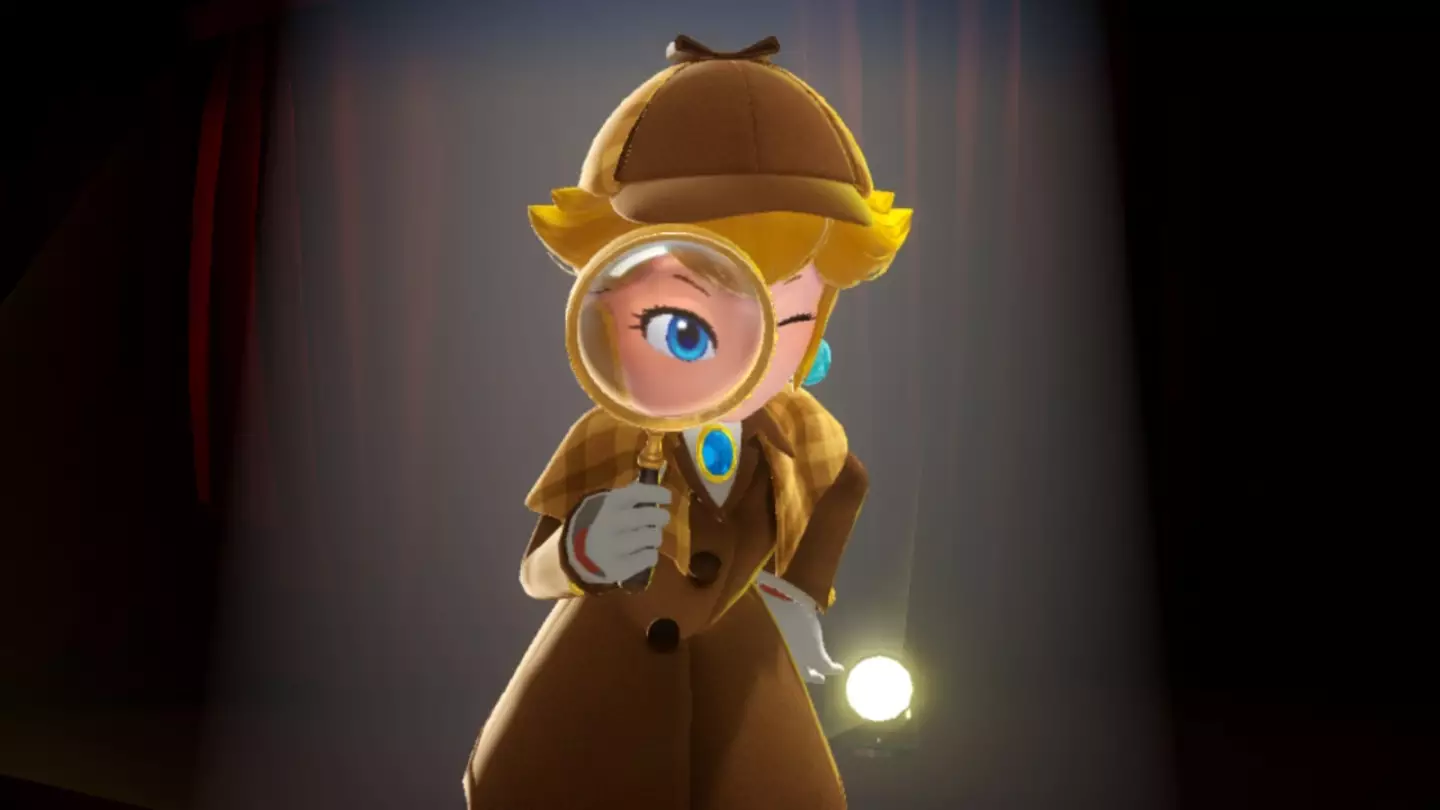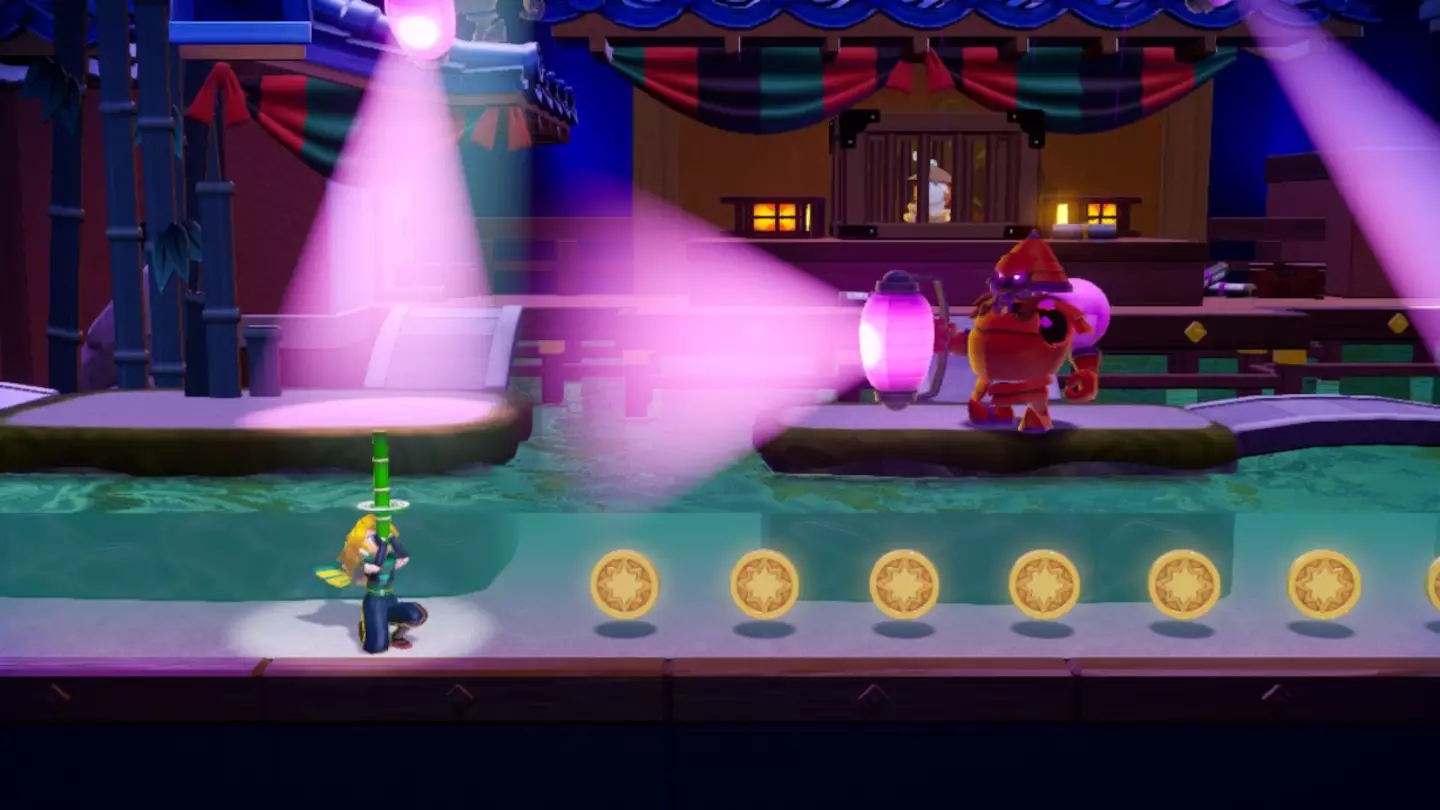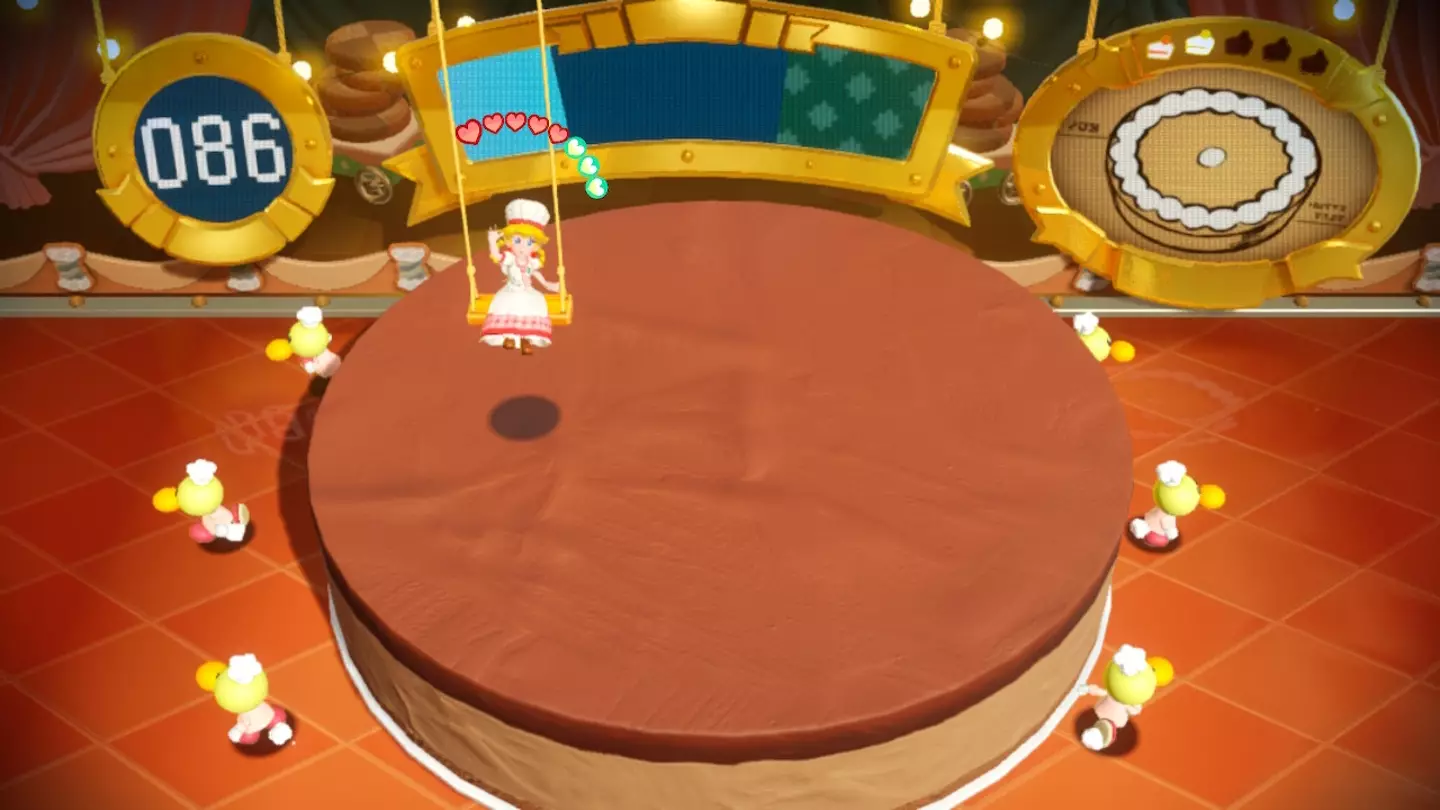
Ever since the first announcement, Princess Peach: Showtime! has been on my radar. Despite my love for Mario, he’s been doing the rounds for a considerable number of years now, and, while iconic, it also feels overfamiliar in the beats he hits. There has been the odd exception in recent years, but, for the most part, Mario has started to out stay his welcome.
My initial fear going into this pink paradise was that it would pigeonhole Princess Peach as a damsel, even in spite of her being the lead in an “action” adventure. After all, Princess Peach has been forced to play the part for decades now, and although she’s more recently branched out to demonstrate her mettle, the long legacy that’s paved her way to this very moment is hard to ignore. Perhaps this is why Princess Peach: Showtime! feels like such a breath of fresh air – it allows our beloved princess to come into her own, and in magnificent style befitting one of her fashionable station.
Free from Mario’s shadow, Princess Peach is able to follow Luigi’s footsteps; ushering in the dawning of a new era, one where she’s able to fully embrace her flair for the dramatic, style, and, above all else, combat. Because Princess Peach is far from a pushover when it comes to defending herself, especially when utilising a fine array of costumes (and the powers that come with them).
Advert
Transform into a cowgirl, ninja, and swordfighter with Princess Peach: Showtime!
As is customary with so many titles within the Super Mario universe, this is far from a slow burn affair – it takes a matter of minutes, if that, before chaos ensues and Princess Peach is thrown into a theatrical tale where she must command the stage, lest the bad guys win. The once pristine, welcoming theatre she intended to take in a show at, is now steeped in trouble, the original actors scattered to the wind as each play is tainted with a villainous atmosphere.
The stage is set for someone to save the day, and our heroine isn’t going to falter simply because she’d scheduled for a night of gaily lit amusements. From here on in, Princess Peach not only becomes a saviour but also an all singing, all dancing, all acting protagonist; quickly flitting from play to play, changing her attire and skillset to suit the trials head.
Advert
The theatre acts as the one and only world you visit. Instead of hopping to a new world like Mario does after completing several levels, Peach remains within the theatre at all times. Yet, the plays which are open to her are a means of transportation to new lands. It’s a novel way of keeping each play (aka level) distinctive despite the enclosed environment of the theatre. This, combined with her changing attire, helps make the linear narrative feel a lot more open-ended; fluid, even.

We’ve all seen the previews of Princess Peach’s diverse collection of costumes, but it’s one thing to see it and another to tap into their abilities. Even though Mario has similar costumes, Princess Peach: Showtime! sets itself apart by ensuring that each costume bestows a unique combative advantage over enemies; she can wield a sword, or blend into the shadows and strike. Our illustrious princess can also wrangle her foes, or take the time to decorate a baked good or two – whatever is required to save the plays. Not that she’ll be doing it alone; Stella the Sparkle sprite acts as her guide. Although many of us have experienced the pain of being saddled with a questionable guide in other games, Stella is a useful asset rather than a hindrance.
By embracing Princess Peach’s unashamedly feminine side, we receive a heroine free from the bonadage of stereotypes; she may look attractive, she may have style, but she’s also cunning, smart, and resourceful. This is arguably why the game feels like such a triumph: because it doesn’t try to turn Princess Peach into someone she was never meant to be. These traits – this adaptability – has always been there, we just couldn’t easily see it.
Advert
It isn’t just her attire that delights, though, it’s the challenges that each play presents. Even during the times that Princess Peach dons the same outfit for a second time, players quickly discover that complacency isn’t possible. You can certainly get into a groove with the Princess, able to understand her controls, but you can never assume you know it all because the game likes to keep you on your toes. It’s what I so admire about the ambition of this title, and of Princess Peach’s character development in general.
But it isn’t all fighting – there’s also opportunities to discover hidden areas, pop the Balloona that are in all the plays, as well as unlock a new Dress Ribbon for either Peach or Stella. Both the Balloona and Dress Ribbons aren’t necessary for you to proceed, they simply provide extras for you to relish; the Balloona will bestow coins or hearts, while the Dress Ribbons unlock new dresses for Princess Peach to wear when she’s not in costume. Unlike the other outfits, however, the dresses you purchase are purely aesthetic in nature. That being said, some of these Dress Ribbon tasks yield Sparkle Gem fragments, thus making them worthy of the extra effort you’ll have to exert.

You’ll also partake in scenes that are incredibly fast moving – Cuphead-esque – which makes for a thrilling ride as you attempt to collect coins and/or Sparkle Gems along the way. It’s easy to miss a lot during these fast-paced sequences, which is why the ability to replay each play becomes such a welcomed boon. You don’t need to ace each play, but you do need to be collecting as many Sparkle Gems as possible, otherwise opening up each new floor is going to prove difficult. As a completionist, I found it nigh impossible to ignore a blank space on each play’s overview.
Advert
Of course, the foes of this tale aren’t going to make it easy. While the generic enemies may feel easy to dispatch, the mini bosses take more skill, with players needing to embrace the unique capabilities of the costumes available. You might want to hack and slash, but foolhardy ignorance won’t get you far. The same is true of the bosses, of which there are several. These aren’t Soulslike in their difficulty, but they do present a challenge, especially as you progress further into the theatre and unearth Madame Grapes’ plan.
One boss in particular reminded me, surprisingly, of Batman: Arkham Asylum; a foreboding boss controlling the set as you try to navigate without misstepping. Trust me, when you get there you’ll know exactly what I mean. And while this boss fight doesn’t present the same level of difficulty as in the Arkham series, the fact that Princess Peach: Showtime! reminded me of such a moment is testament to how much thought has gone into making sure Princess Peach is the real deal. She’s not a pretender, and she’s not a damsel.
So far, I’ve highlighted every pro of the game – of which there are many – but there are cons to this adventure. Chiefly, the graphics. It isn’t always noticeable, however, during the odd cutscene or loading screen, the dwindling capabilities of the Nintendo Switch are unpleasantly laid bare. These scenes feel stuttery, a slight lag miring an otherwise enjoyable interlude as we get a quick dose of exposition. It’s nowhere near as damning as what we saw in Pokémon Scarlet & Violet, however, it’s there all the same; it adds a blemish not easily overlooked to an otherwise excellent experience.
In partnership with this glaringly obvious issue, is a “problem” that comes from my own fears about the legacy this game leaves behind: can Princess Peach be more than a one hit wonder? Obviously, yes she can, but it’s whether Nintendo will realise her potential and continue to nurture the multifaceted nature of her personality and character.

There’s no doubt that Princess Peach is already beloved by the fandom, however, we’ve still only scratched the surface of who she really is. The worry is that Nintendo will try to keep Princess Peach confined by the safety of the known – she won’t be allowed to continue along this path of individuality for concerns that she’ll stray too far from a well-known formulaic narrative Nintendo can create with its eyes closed. To doom Princess Peach to such a future is criminal. And what of the other princesses? Rosalina and Daisy, to draw attention to just two examples, present an avenue for Nintendo to explore, one in which these characters can become as memorable and as iconic as Princess Peach. Leave Mario and Luigi be, for now, so Nintendo can embrace its smaller, bit part protagonists to see how they fare in the spotlight.
Advert
Nintendo should, by all means, take what it’s learnt from Princess Peach: Showtime! and expand upon it, but it shouldn't fall into the trap of keeping her, or indeed any of its other female characters, confined to dress changing antics only. Peach deserves more backstory – more freedom from Mario – so that she can become as lauded as the likes of Lara Croft, albeit in her own, unique way. Pretty in pink is Princess Peach’s opening number, but for the show to truly go on, she needs to be allowed to broaden her horizons. Princess Peach: Showtime! is a fantastic first step, now all Nintendo needs to do is embrace the era that’s on the cusp of dawning.
Pros: Plenty of challenge, unique abilities, and boss fights that utilise Princess Peach’s extensive skill set
Cons: Lagging during cutscenes, linear/formulaic plot, and eventually becomes repetitive
For fans of: Mario + Rabbids Sparks of Hope, Super Mario Bros. Wonder, Super Mario RPG
8/10: Excellent
Princess Peach: Showtime! is set to launch on 22 March on Nintendo Switch (version tested). A review code was provided by the publisher. Read a guide to our review scores here.
Featured Image Credit: NintendoTopics: Super Mario, Mario, Nintendo, Nintendo Switch